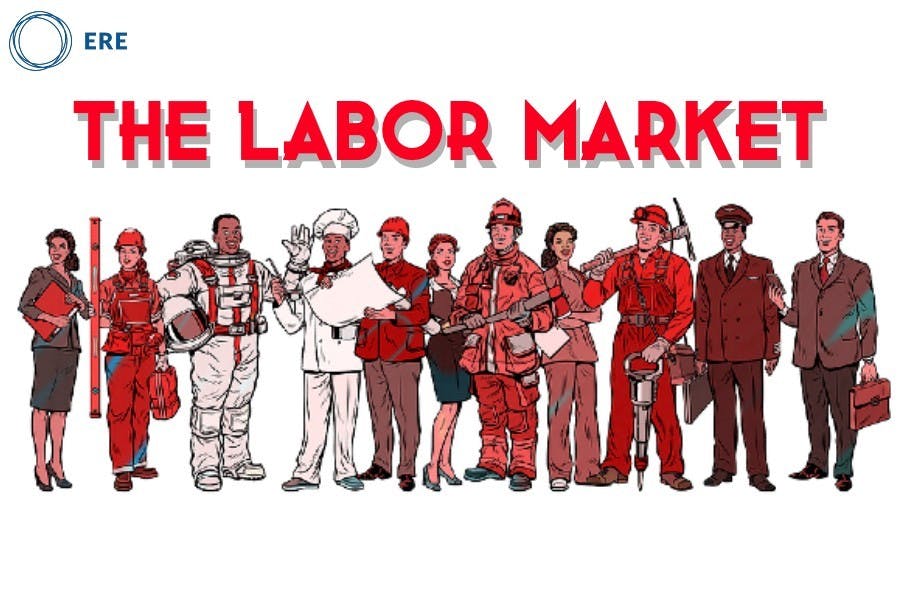The unemployment rate has dropped to 6.9% from 7.9% in October as the economy added 906,000 jobs. While that is encouraging news, the unemployment rate is deceptive as a measure of how many people are out of work.
The official rate of unemployment is a ratio of the number of people counted as unemployed to the number considered to be in the labor force, which includes everyone who has a job or wants one. People considered unemployed, as measured by the Bureau of Labor Statistics (BLS), are those who do not have a job and have actively searched for a job in the past four weeks.
The unemployment rate, then, is the number of people considered unemployed as a percent of the active labor force.
An Incomplete Number
But calculated this way, the rate typically under-represents the true picture. It doesn’t include people who are underemployed, discouraged, and furloughed. Oddly, the BLS does not use the number of people collecting unemployment benefits as a measure of unemployment. While not everyone who is unemployed files for benefits, that number would likely provide a more representative picture of unemployment.
For example, in June there were 21 million people considered unemployed but 30 million were collecting unemployment benefits. This would’ve pushed the unemployment rate to 15.2%, instead of the official number of 13.3%.
Estimates of unemployment are based on the Current Population Survey (CPS), which collects data from a sample of about 60,000 households. Data from the survey is then used to calculate the unemployment rate (U3).
The BLS does also estimate the “real” unemployment rate (U6), which includes the underemployed, those working in jobs for which they are overqualified, and people who work fewer hours than they would like. This is much closer to the true picture since it includes individuals who are discouraged and marginally attached to the labor force. It also accounts for those who have given up looking for a job because they cannot find one that matches their skills and preferences. In October, U3was 6.9%, while U6 was 12.1%.
An alternative measure of the employment situation is the Current Employment Statistics (CES), or the payroll survey. This is based on payroll records from about 145,000 employers. The CES is likely a better measure of employment since it only counts as employed those who have jobs that produce income. The CPS, on the other hand, counts as employed people who are unpaid family workers, private household workers, and individuals on unpaid leave.
The Impact of Covid-19
The pandemic has caused large numbers of workers to be furloughed — i.e., put on a temporary layoff. At the peak in June, there were over 10 million people in this category, but the number has been reduced to about 3 million in October. Furloughed workers are not considered unemployed unless they have been on furlough for at least four weeks or laid off. Historically, this hasn’t distorted the unemployment rate much because few people were furloughed — the previous record was 2.5 million in 1982. Meanwhile, during the Great Recession, fewer than 1% of employees were furloughed, compared to 20% who were let go.
Long-Term Unemployment
A related measure of unemployment is long-term unemployment, the number of people unemployed for 27 weeks or longer. That number has climbed from about 900,000 in April to 3.6 million in October. That’s about a third of the total unemployed.
The long-term unemployed experience a deterioration in skills limiting their ability to find comparable jobs to what they held before becoming jobless. The longer that people are out of work, the less likely they are to be employed again. What’s more, the job-finding rate declines by about 50% within eight months, indicating that the workers’ skills no longer meet the needs of the job market. Long-term unemployment represents a permanent loss of human capital and consequently shrinks the labor force.
So Can Unemployment Be Accurately Measured?
The true level of unemployment can likely never be known with any degree of precision. There is no reliable methodology for defining who is considered unemployed or employed.
- A person is considered employed in the CPS even if they worked a single hour in a week.
- The household survey (CPS) overstates the economic impact of employment because it reports people as employed who may not have earned any income.
- A person working three part-time jobs is considered employed full-time so long as the total adds up to 30 or more hours in a week.
- The Payroll Survey (CES) counts three part-time jobs as three separate jobs even if the same person is doing all three and the BLS does not consolidate duplicate Social Security numbers to determine how many are actually employed. The CES also does not include anyone who is self-employed.
- The labor-force participation rate — the denominator in the unemployment rate calculation — does not include those who were forced to take early retirement, people with disability pensions who would like to work, and individuals who work part-time and seek full-time employment. To be considered “actively looking,” a person must be engaged in activities like applying for jobs and having interviews. Networking or perusing job postings does not qualify.
- U6 likely comes closest to measuring total unemployment, but any measure under-represents the true picture.
In practical terms, the unemployment rate, regardless of measure used, is best looked at as a trend indicating the direction of the economy. The Federal Reserve currently considers 4.1% to be full-employment, so the closer U3 gets to that figure, the better the shape the economy is in.
